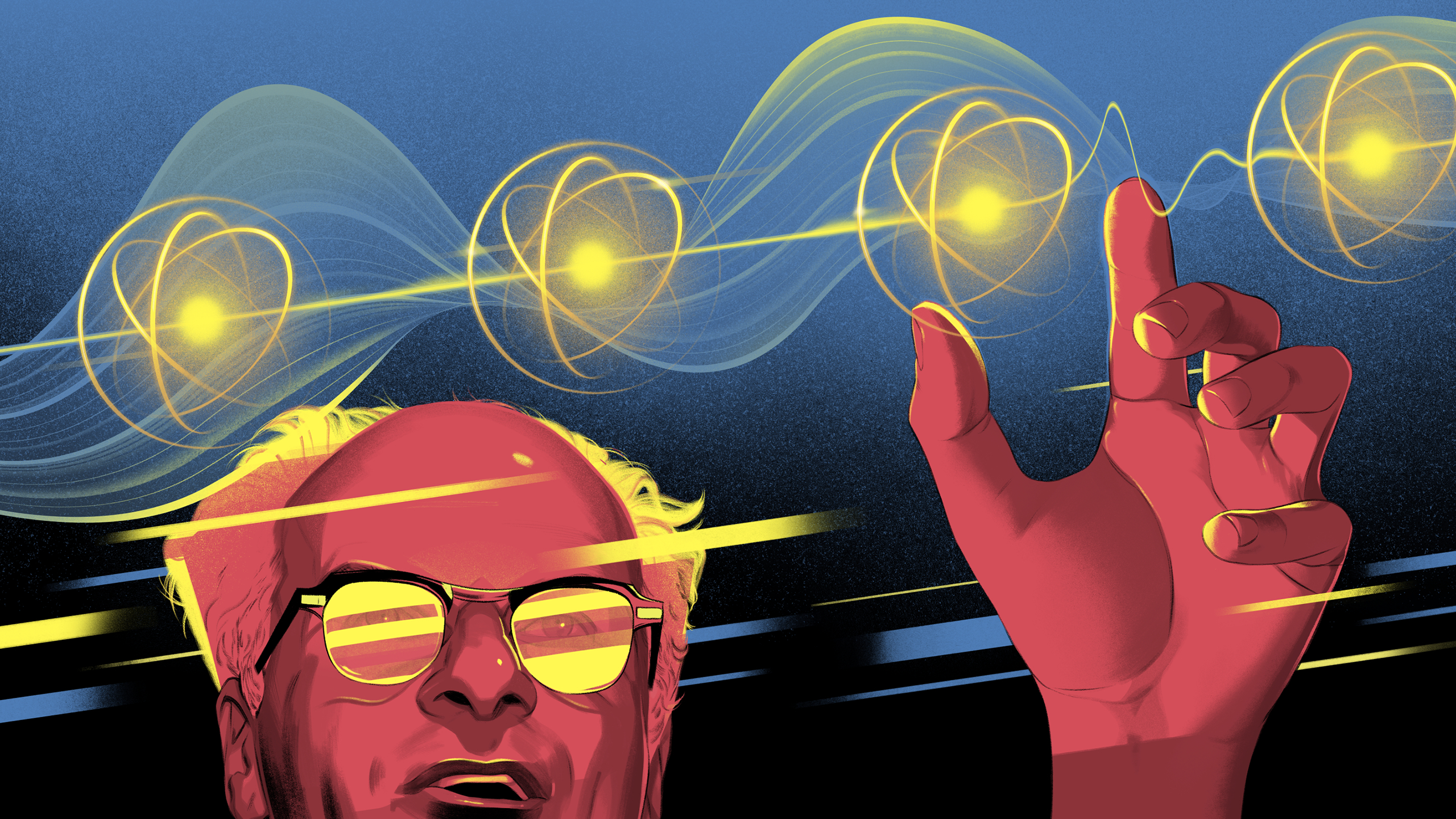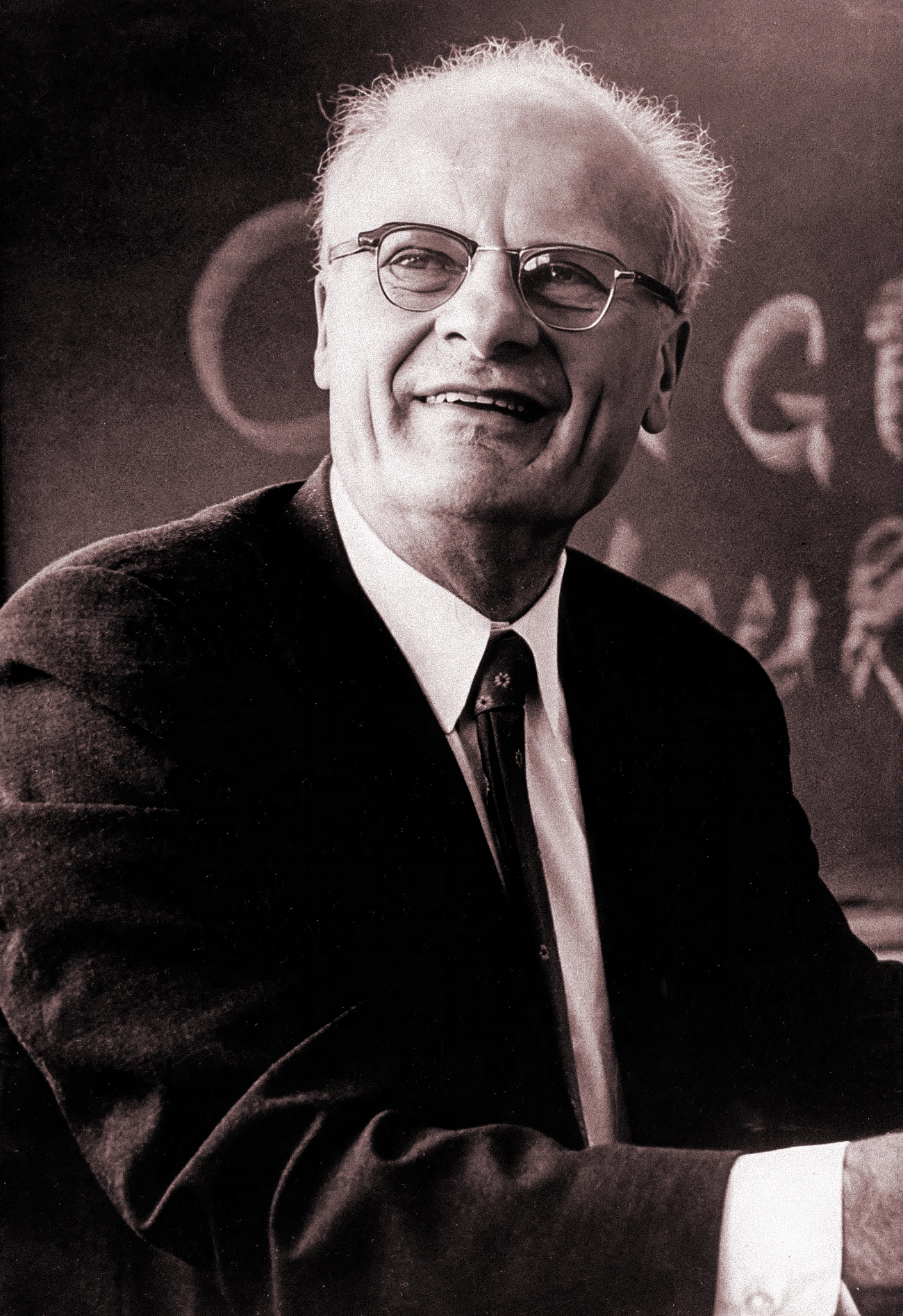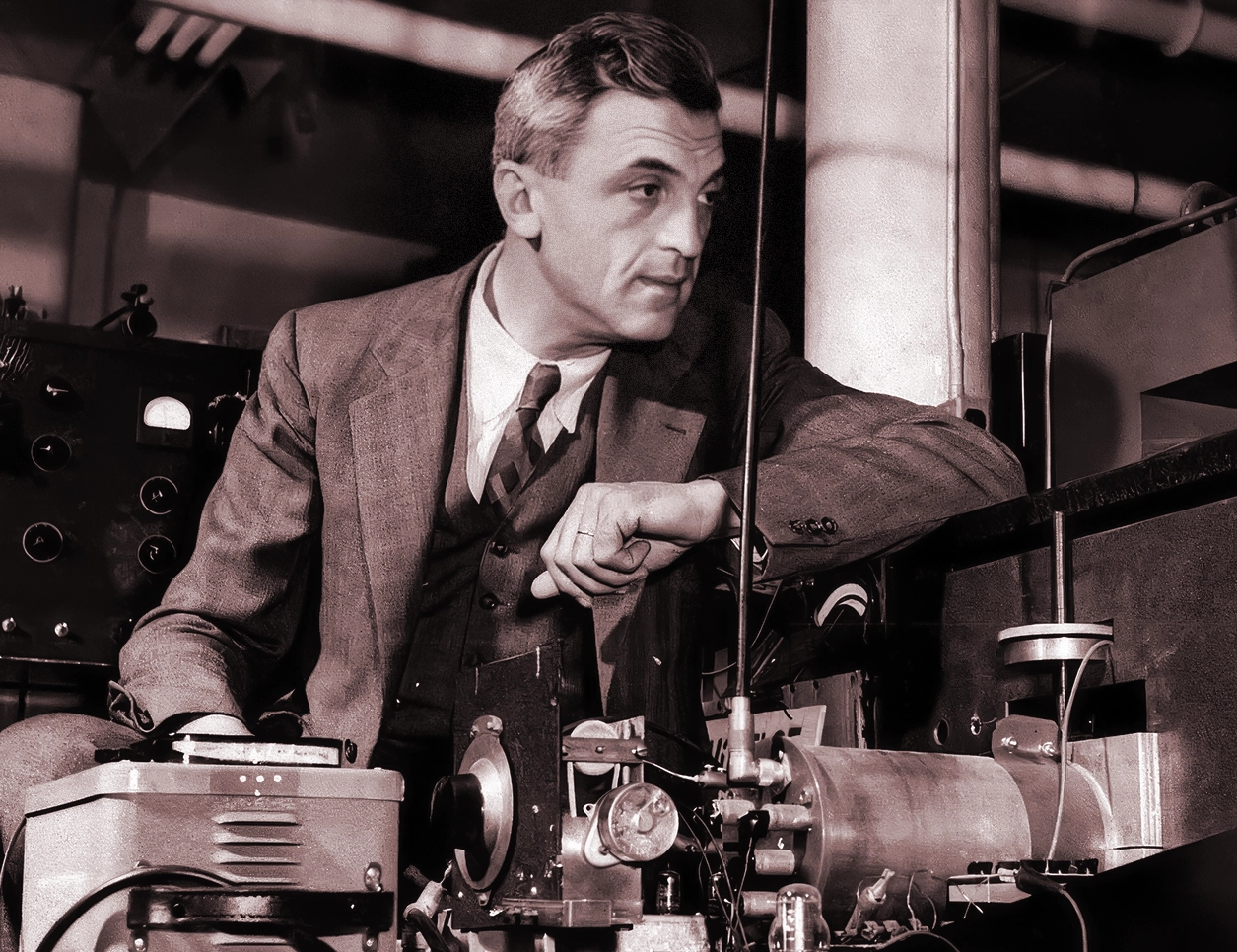How Hans Bethe Stumbled Upon Perfect Quantum Theories

Hans Bethe pioneered a method that — when the stars align — allows physicists to perfectly understand the collective behavior of any number of quantum particles.
Señor Salme for Quanta Magazine
Introduction
By 1928, quantum physicists seemed poised to unravel matter’s final secrets. The German researcher Walter Gordon had applied the emerging theory of quantum mechanics to the hydrogen atom, the universe’s simplest atom, and worked out exactly how it behaved. A mastery of all atoms seemed sure to follow.
It did not. When quantum particles influence each other, their possibilities intertwine in such a way that it overwhelms physicists’ ability to predict their future. In the search for sharp answers, the lone electron of the hydrogen atom marked the start and end of the road; even the two electrons of the helium atom doomed exact approaches like Gordon’s. It’s a limitation that physicists still grapple with today. Almost every quantum prediction is a little rough.
However, three years after Gordon’s triumph, his countryman Hans Bethe (pronounced “BAY-tah”) had found a striking way around this problem. Bethe’s “ansatz,” German for “starting point,” would turn out to perfectly capture the behavior of any number of quantum particles, from a single electron to the countless electrons in a sheet of ice. This extraordinary power comes with its own limitation, though, which would take decades to understand.
Bethe’s ansatz has captivated generations of researchers. Richard Feynman, the legendary theoretical physicist, was studying it when he died in the 1980s. Now few areas of physics remain untouched by Bethe’s nearly century-old insight.
“Its importance has continued growing to this day,” said Charlotte Kristjansen, a professor at the Niels Bohr Institute in Copenhagen.
Magnets on a Chain
In the early 1930s, Bethe was trying to use quantum mechanics to understand how iron becomes magnetized. But a hunk of metal has many more particles than a hydrogen atom, so there was no way to use standard quantum tools to understand the magnet exactly. He needed a way to approach the far more complicated quantum system.
Bethe employed a simplified model of a magnet, known as a spin chain: a single line of atoms, each pointing up or down like its own tiny bar magnet. If all the north poles swiveled upward, say, the chain would become magnetized. His challenge was to calculate the energy needed to flip the atoms in this way. In principle, doing so required keeping track of every last atom — a herculean task that seemed to need approximations, shortcuts that simplify a calculation but introduce imprecision.
The spin chain built upon pioneering work by Felix Bloch in 1930. Bloch had put aside the individual atoms and their many interactions, and instead focused on the collective motion that came out of those interactions.
In a spin chain, that motion is waves like those seen at stadiums. Flip one atom, and it will flip its neighbors, who will flip their neighbors, and so on. These waves are still extremely complicated; when two waves ripple through the same stretch of particles, any particle can flip any other particle, leading to pandemonium. Bloch’s theory forbade this messiness. He assumed that each atom could flip only its immediate neighbor. Then he guessed that, as a consequence, the resulting waves would always collide gently, passing through each other with minimal disruption. The assumption kept things tidy enough to handle.

Hans Bethe, a famously careful physicist, built on Bloch’s work to develop a way of perfectly capturing the behavior of certain complex quantum systems.
Keystone Press/Alamy Stock Photo
His intuition nearly solved the problem, but he had overlooked one key mathematical detail. “Had he been less lazy with arctangents or logarithms, we would call this the Bloch ansatz,” said Jean-Sébastien Caux, a professor at the University of Amsterdam.
Bethe realized there was a second possibility for how two waves might coexist: They could attract each other so that they travel together. With that, Bethe captured everything the spin chain could do. Accounting for these two collective motions — gentle collisions and traveling in pairs — he could calculate the exact energy for every possible arrangement of the chain.
Bethe had stumbled upon a perfect quantum theory, one that worked for any number of particles. He never did use it to explain real-world magnets, however. It worked for chains but not for blocks of atoms as he had envisioned. Instead, it would prove its worth in other ways.
The Roots of Quantum Perfection
As Hitler rose to power in the following years, Bethe fled Germany, eventually reaching the United States and serving as a leader in the Manhattan Project. After the war he continued to study physics. But he never returned to his ansatz.
Others would discover just how much Bethe’s ansatz could do. It worked for spin chains with blemishes, and even for strings of particles influencing each other in non-magnetic ways. Puzzlingly, though, it continued to fail with the real-world blocks of atoms that had originally motivated Bethe. It wasn’t until the 1960s, when theorists applied it to thin sheets of ice — another system of countless quantum particles — that they figured out why.
Experimenters, cooling ice to unprecedentedly low temperatures, uncovered a mystery. If ice lost all its heat, they expected its molecules to settle down into a perfect, one-of-a-kind crystal. Instead, they found a strange disorder, as if molecules could end up in different arrangements that varied subtly from experiment to experiment.
Theorists realized that the frozen sheets also contained waves traveling down a line. Each sheet did indeed form a perfect crystal of repeating H2O molecules. But each molecule could take on one of six different configurations, like a pixel that can be either red, green, blue, yellow, orange or purple. Each time experimenters cooled down the ice, they got a different multicolored image. But there was a method in the madness. Theorists broke apart the image, starting at the top, taking it line by line. They treated each string of pixels like a frame in a movie. And when they played the movie, they saw waves. A green pixel might ripple down the line to the right, to give an overly simplistic example. And when these waves collided, they did so gently, keeping their shape, just as in Bethe’s spin chain.
So with the Bethe ansatz, physicists could precisely calculate the chances of measuring those patterns in an experiment. It was another perfect quantum theory.

Felix Bloch worked out much of the physics that would ultimately become known as the Bethe ansatz.
Public Domain
This gentleness and this geometry were at the root of the Bethe ansatz’s power, as the Australian physicist Rodney Baxter argued in the early 1970s. Many systems conserve momentum and energy, even during violent collisions. But in ice sheets, the gentleness of the collisions preserved many more quantities. Momentum and energy were just the first of an unending list of conservation laws, each building on the previous one. Using these laws, Baxter explained which problems Bethe’s ansatz could solve. If a system contained waves gently colliding on some chain, either moment by moment or line by line, the multitude of conservation laws would tame it.
In these cases, “you have a full story from A to Z. You start from the microscopic and you derive absolutely everything,” Caux said.
Feynman’s Last Puzzle
With this deeper understanding, physicists went on to wield the Bethe ansatz in new ways. After his death, a photograph of Feynman’s blackboard captured the words, “What I cannot create, I do not understand,” along with a list labeled “to learn,” which begins with Bethe’s ansatz.
In his final months, Feynman had spoken of an “ambitious dream” to use the Bethe ansatz to understand collisions between high-energy particles, which physicists predicted through tricky approximations. He noted that two protons often zoom past each other like cars in opposite lanes of a highway. Rather than making direct contact, they swap short-lived particles. This exchange brings them closer together or pushes them further apart, but doesn’t meaningfully affect their rapid speed. The important changes take place moment to moment along a line, just like in a spin chain.
Cancer claimed Feynman before he could build on the idea. But others eventually pieced together the puzzle. When Ludvig Faddeev, a Russian physicist and master of the Bethe ansatz, gave a talk at Stony Brook University in 1994, he wrote a formula on the blackboard from one of his earlier papers. It described a particular system whose behavior could be calculated using Bethe’s ansatz. Gregory Korchemsky, a particle physicist in the audience, immediately recognized it from another context. The Nobel laureates David Gross and Frank Wilczek had used the same formula in the 1970s to describe energetic particles “cracking open” a proton.
Working together, Faddeev and Korchemsky found that indeed, Bethe’s ansatz applied to high-energy particle collisions — realizing Feynman’s dream. What Gross and Wilczek had approximated, they calculated exactly. Bethe’s ansatz has found more uses since then, such as in perfect toy theories of quantum gravity.
In a world of many particles, the effects of everything on everything else often overpower theorists. Bethe’s guess, however, gave physicists a way of understanding certain quantum systems completely. Over the next century, physicists distilled his insight into a recipe that — when the stars align — lets them precisely predict the otherwise unknowable. And they have marveled at how those stars occasionally do align, allowing for perfect predictions of ice, protons, black holes and more.
Bethe ansatz methods show up in so many places, said Pedro Vieira, a professor at the Perimeter Institute for Theoretical Physics in Waterloo, Canada. “It seems like nature appreciates beautiful things.”



